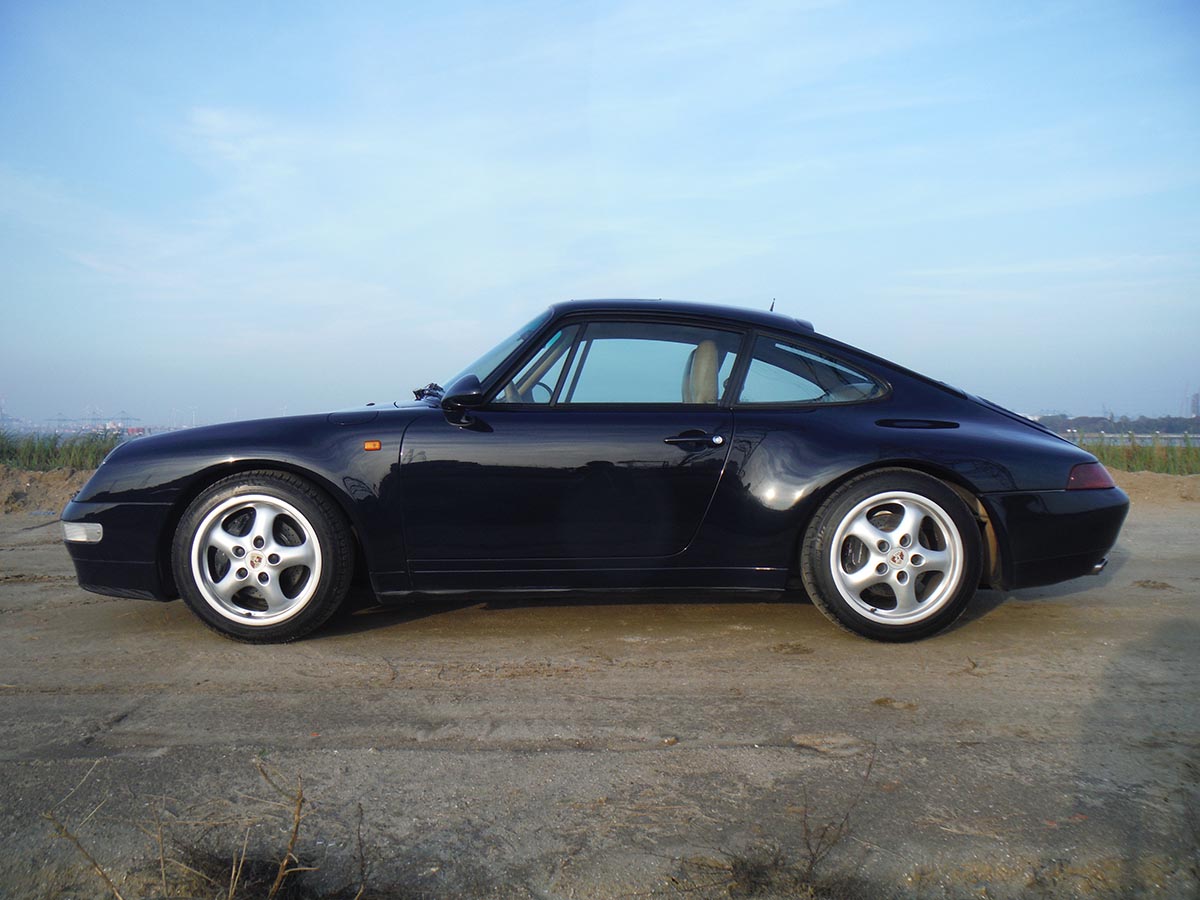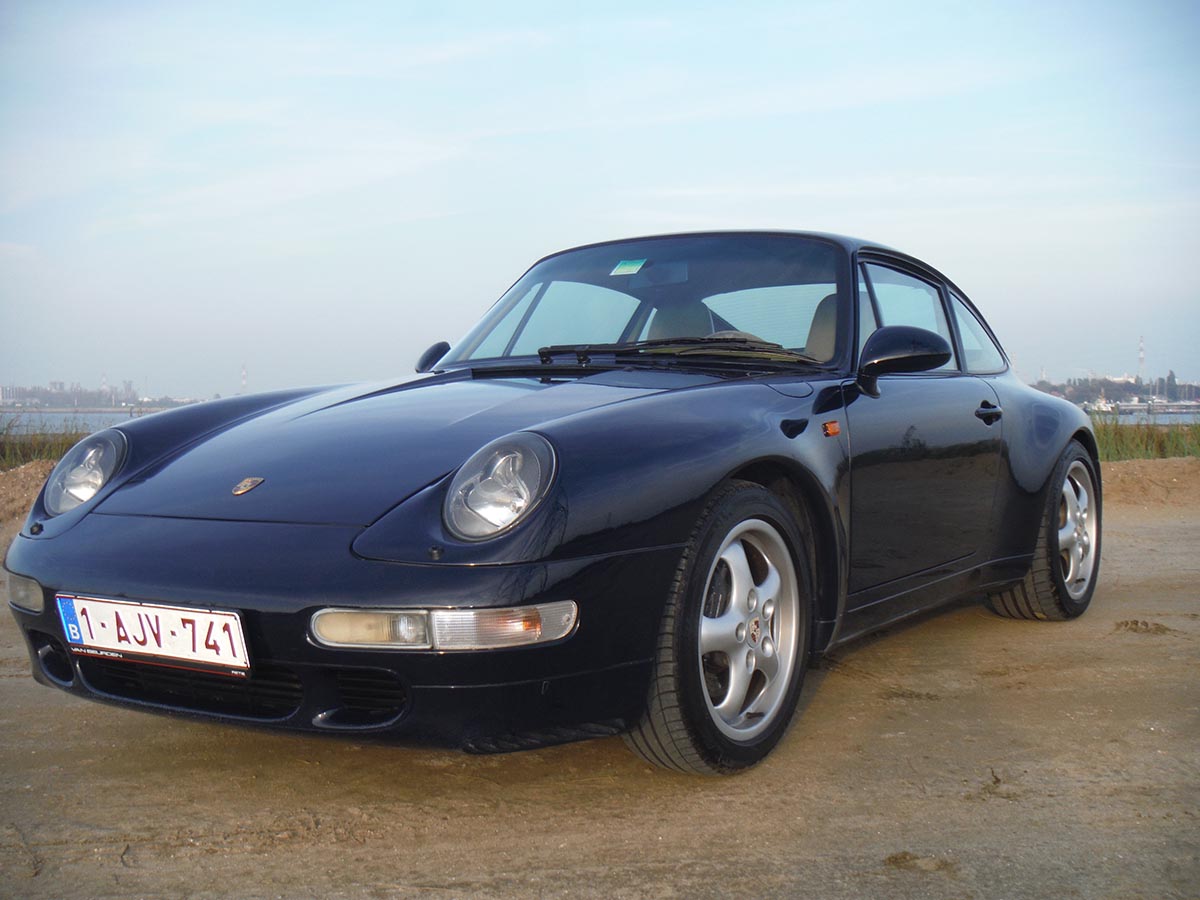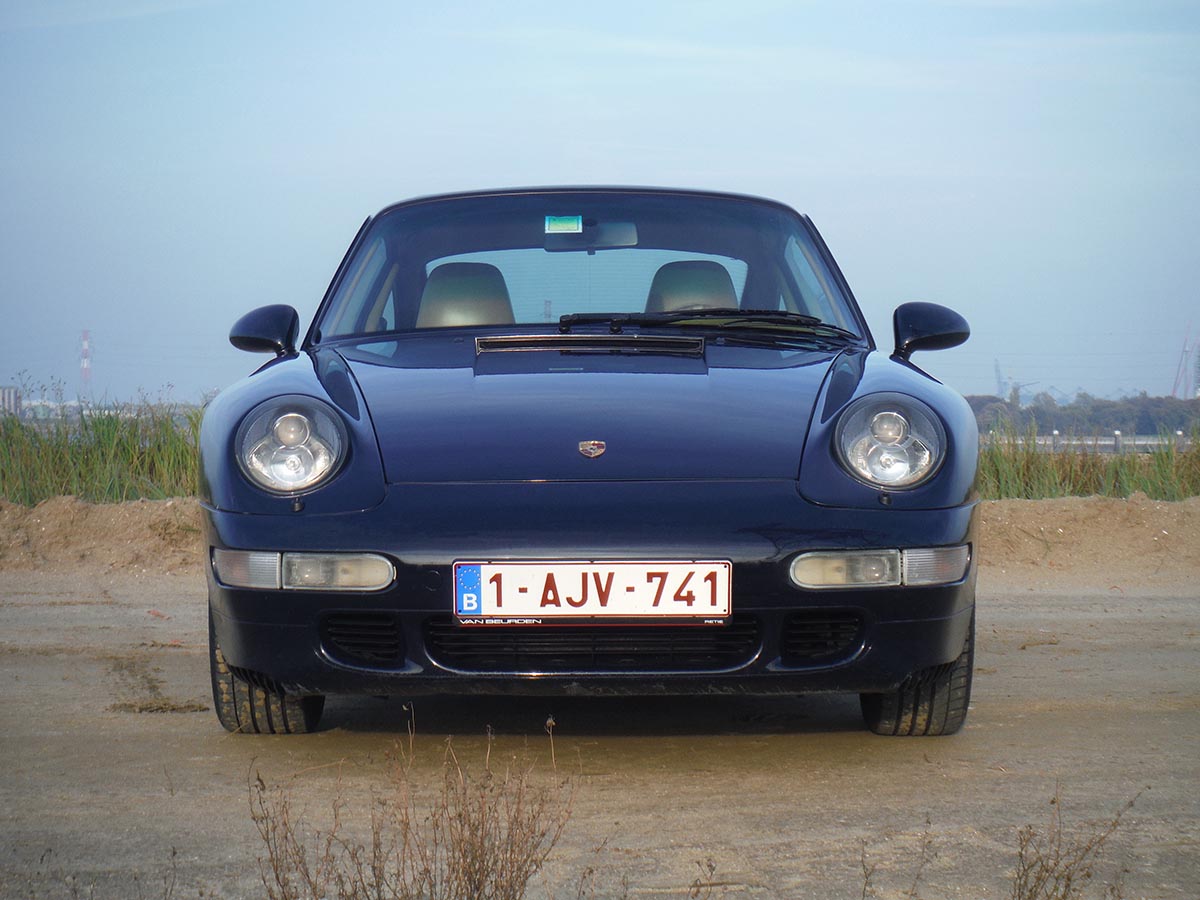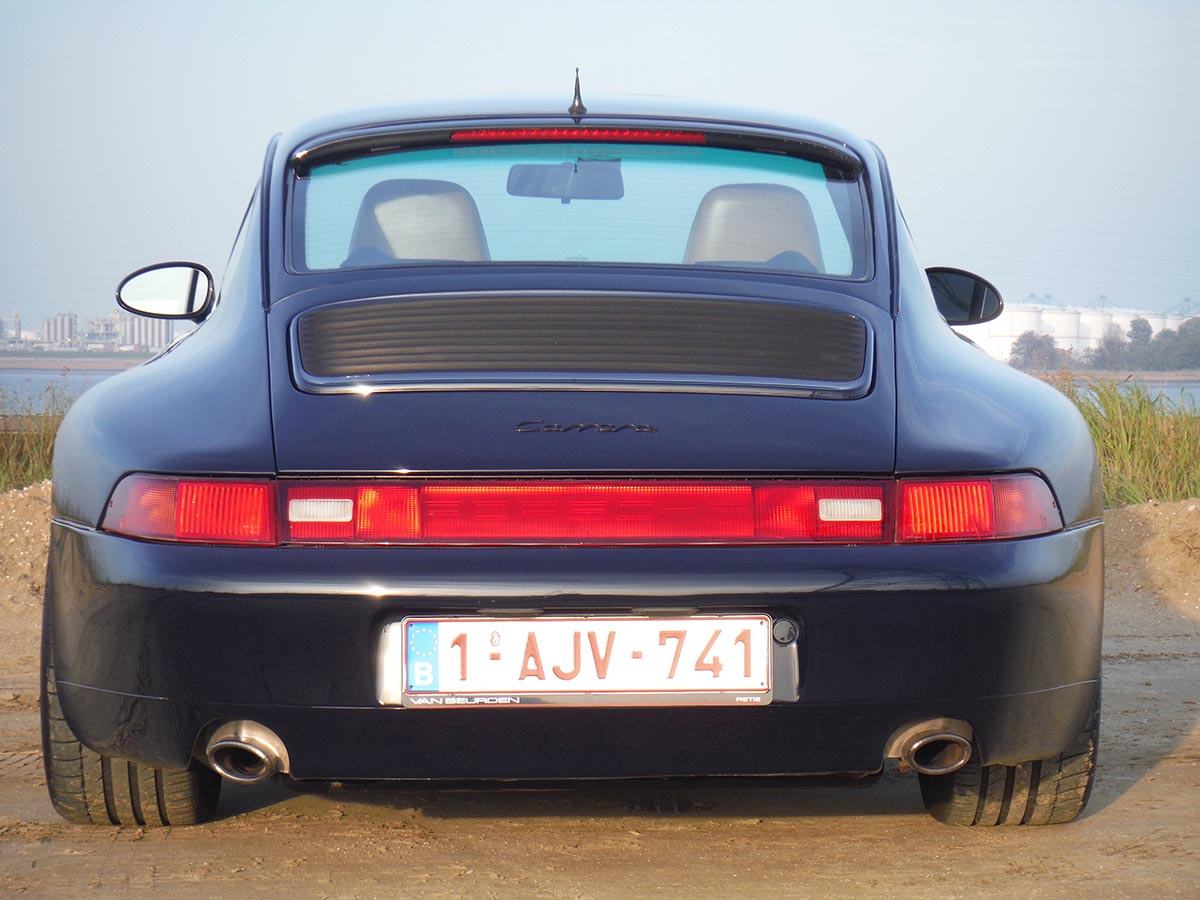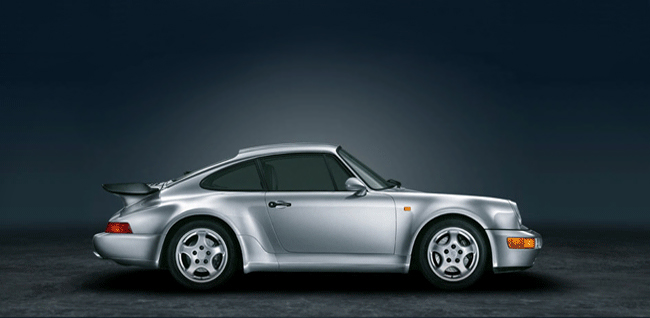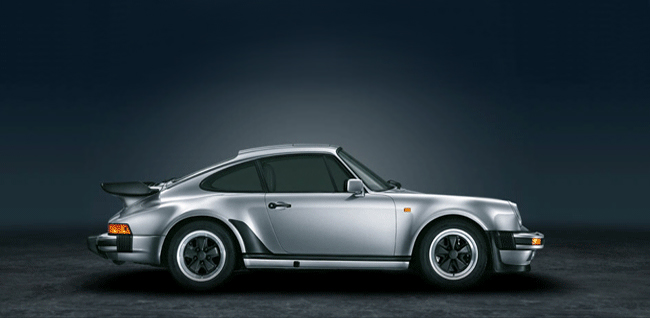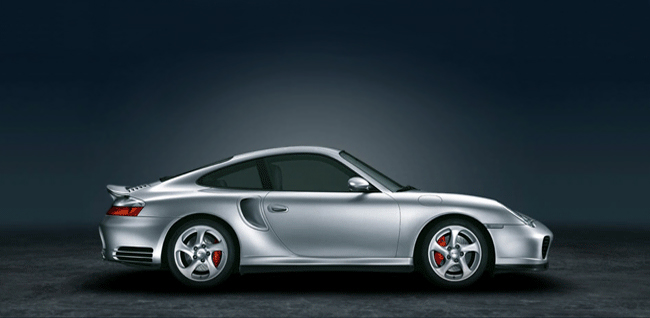 ';
view
';
view

The Porsche 993
The 993 model was a significant advance, not just from a technical, but also a visual perspective. The front wings of the 993 Carrera were wider and flatter. The rear wings were also widened and ran in a straighter line towards the rear with the higher-positioned tail lights. The 993 was initially available as a Coupé and Cabriolet with rear-wheel drive. For model year 1995, there followed the all-wheel drive Carrera 4 and 911 Turbo versions with multi-plate clutch and in model years 1996/97, the Carrera 4S and the Carrera S. The targa model produced as of MY 1996 featured a large, electrically adjustable sliding roof made of tinted laminated glass instead of the removable soft top for the first time. The existing roll-over bar could therefore be dispensed with.
The Carrera and targa models were powered by a new 3.6-litre engine, which initially developed 272 hp and 286 hp as of MY 1996. A multilink rear axle with twin wishbones converted the once notoriously tail-happy 911 into a good humoured companion.
In the 911 Turbo from the 993 model line, twin turbocharging was used for the first time, with one smaller turbocharger installed in each cylinder bank. It was also the first Turbo model to feature all-wheel drive. The front apron of the Turbo had three separate air openings at the front plus air slots for brake cooling in the lower side area. The rear spoiler was completely painted in the exterior colour.
The 3.6-litre biturbo engine developed a power output of 408 hp as standard. As of MY 1996, a power kit for increasing power output to 430 hp was available, with 450 hp available as of MY 1998.
In 1995 the Carrera RS with 3746cc engine delivering 300hp was presented. By the usual steps s.a. ascetic buckets and aluminium front lid, 100kg had been saved.

